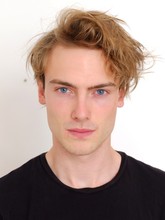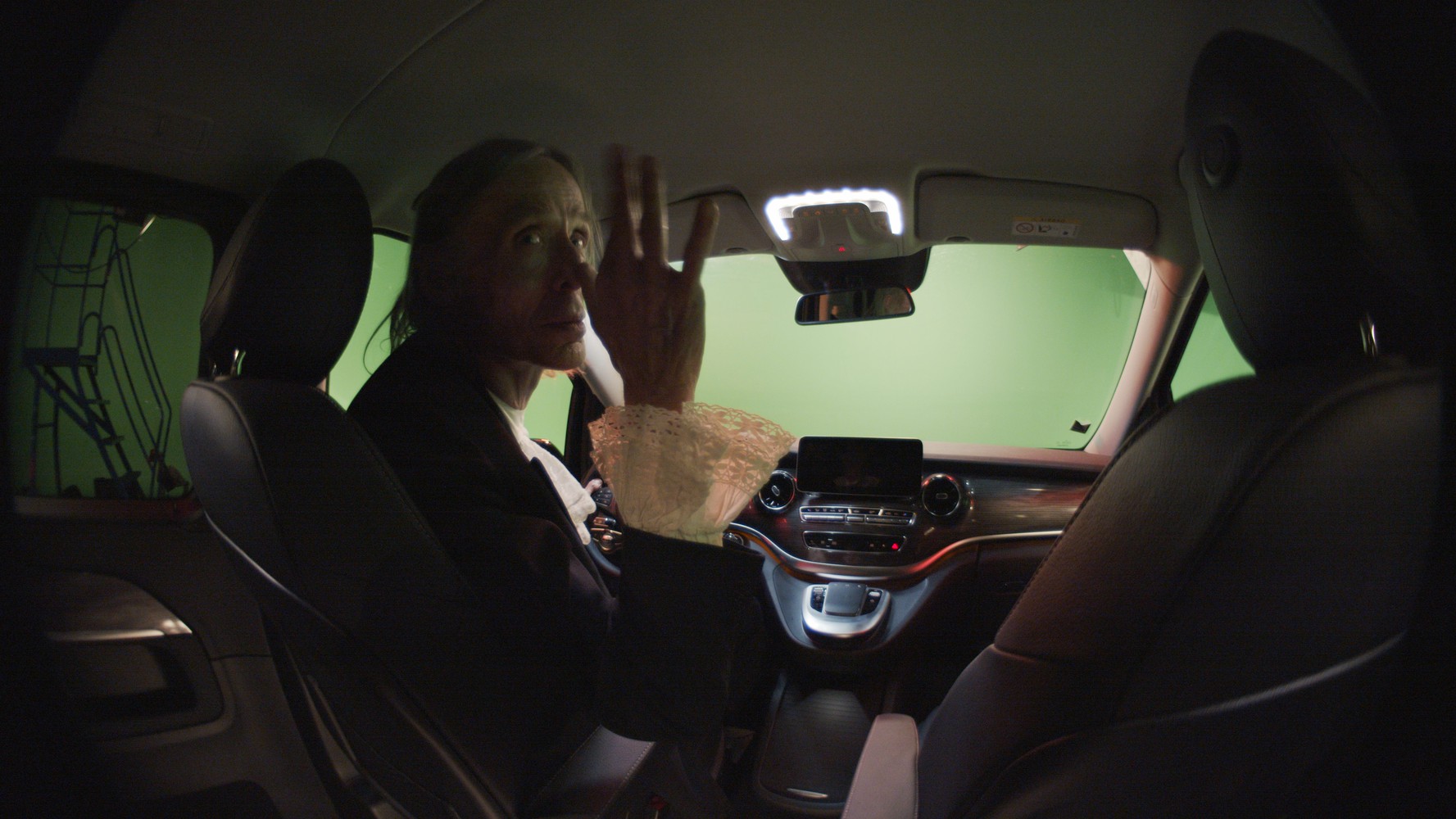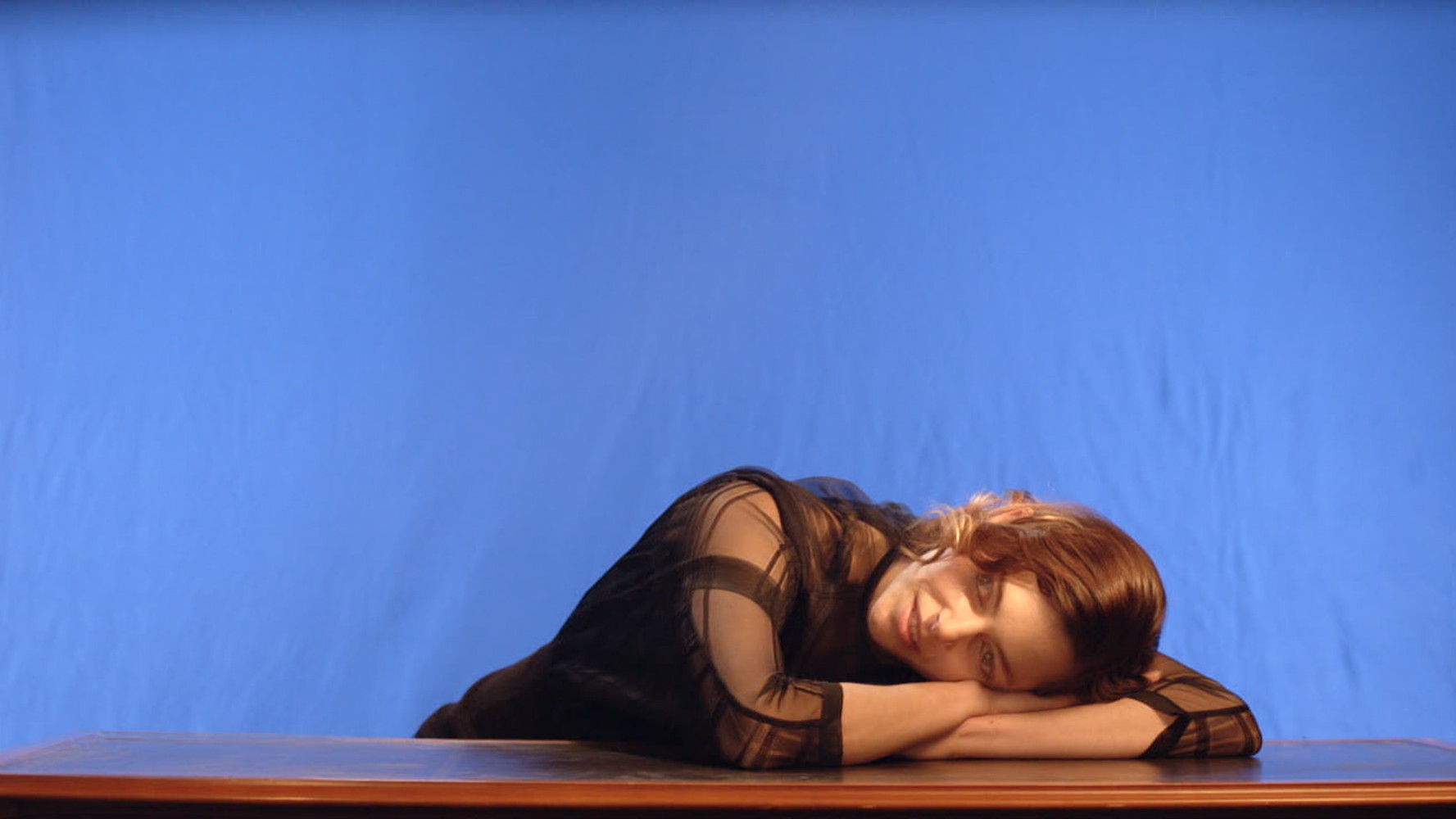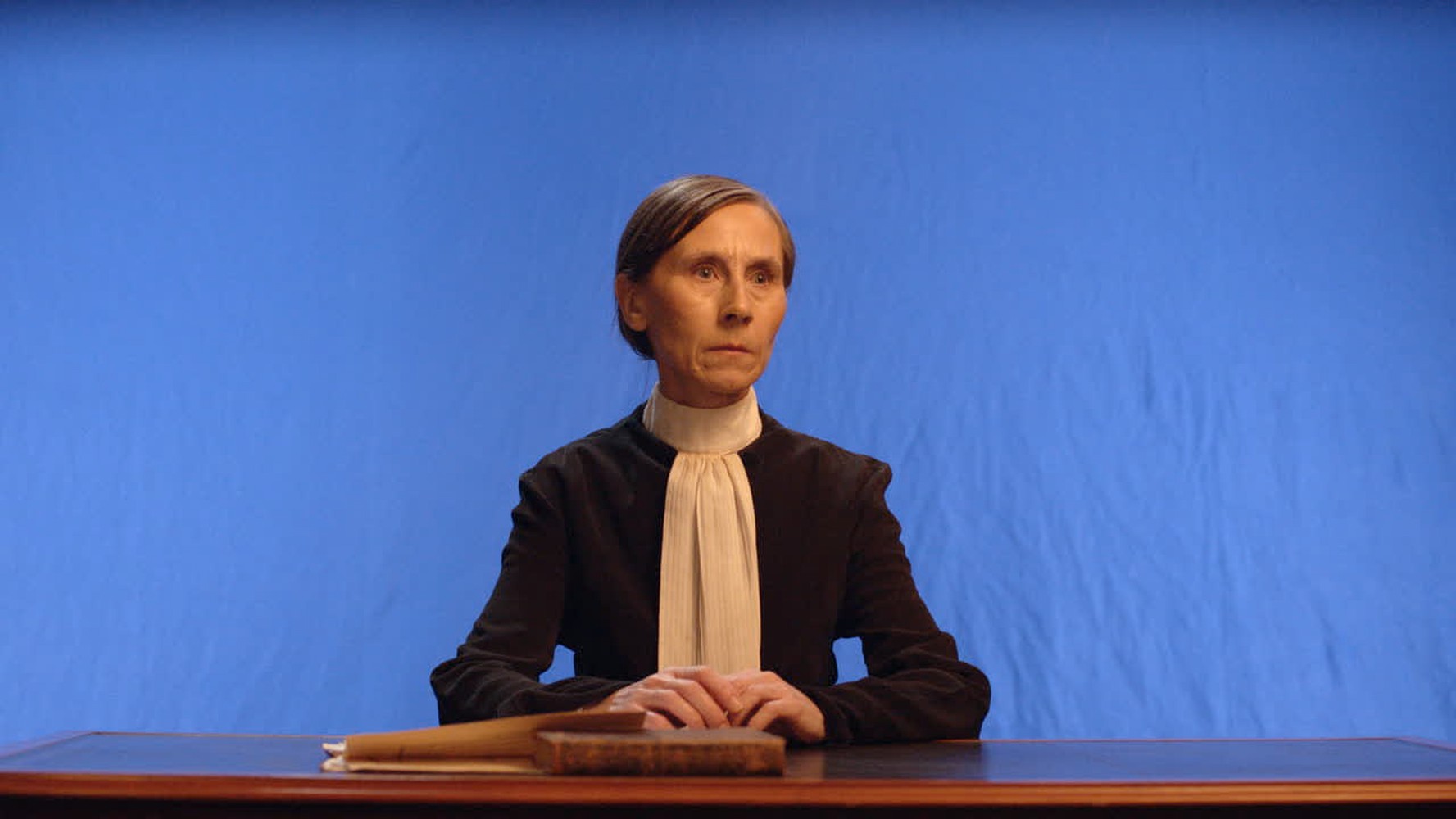Installation vidéo, 6 min
En 897 est convoquée une assemblée à Rome pour faire le procès, à titre posthume, du pape Formose. La dépouille de l'ancien pape est ainsi exhumée, habillée du vêtement papal et installée avec le plus grand soin au centre du concile pour être jugée à cette cérémonie des plus absurdes.
Dans What is a rat without a tail, l'accusé.e n'existe également plus sous sa forme vivante, palpable. La vidéo montrant le/la prévenu.e a été remplacée à par celle d'un arbre discret, un arbre qui "ne sert à rien" comme dirait Vladimir dans En attendant Godot de S. Beckett.
Le spectateur sera donc le seul humain à faire face à cet étrange procès panoptique qui, plutôt que de se rapprocher d'une vérité, semble inviter à continuellement s'en éloigner. Ce qui échappe au regard se construit des fantasmes que nous lui adressons.
A la mémoire de Renate Arbutina Risch
Avec la collaboration de Kunstendecreet - Flanders, SAGA Mercedes-Benz Lille et Droom en Daad
In loving memory of Renate Arbutina Risch
Production : Elisa Heene (Mirage), Clyde Gates (SCUM), Anne Vera Veen (Galerie de Jaloezie), Lucie Bercez (Le Fresnoy – Studio national des arts contemporains)
Texte : Aurélia Declercq, Gabriel Sanson
Image : Arnaud Alberola (assisté par Marie Merlan et Lison Danel)
Effets visuels : Daniel Swan
Montage : Gabriel Sanson, Lina Laraki, Charles Dhondt
Conception sonore : Thomas Becka
Mixage : Raf Enckels
Casting : Griet Troch (The Profiles)
Acteurs : Mout, Daphne, Riona, Jan V, Jan VB, Sophia, Ebe (The Profiles) ainsi que Ben Russell, Alain Fleischer, Paul et Denise Jespers, Rony Férat, Anaïs-Tohé Commaret
Captation voix : Guillaume Desmet
Costumes : Martin Tual, Agathe Léger, Laurie Jespers, Carmen Channers
Maquillage : Nakani Keïta, Ema Simon
Coiffure : Nina Vial
Mentors Fresnoy : Ben Russell et Athiná-Rachél Tsangári

Dorian Jespers (Bruxelles, 1993) est diplômé de l’INSAS et de la KASK. Cette fusion de recherche visuelle et de liberté artistique s’est établie comme un pilier de son univers intime et singulier. Son film Sun Dog, grand prix de Rotterdam, a été invité dans près d’une centaine de festivals ainsi qu’au MoMA, à la Tate Modern et aux European Film Awards.
Cursus2020-2022 Post-Master LE FRESNOY, STUDIO NATIONAL DES ARTS CONTEMPORAINS (FR)
2017-2020 Master Audiovisual Arts KASK & CONSERVATORIUM (BE)
2012-2016 Bachelor Image INSAS (BE)



Nos vies nous mettent en face de l’autre, de son visage et de son corps. Cette expérience induit un espace auquel, tous les deux, nous apparte-nons. Celui du cosmos, de l’énergie que nous échangeons. Cette énergie est une pure dépense, un « abouchement » avec le monde.
Elle permet de pénétrer un univers qui ne se réduit pas à ce que l’on voit, à ce que l’on touche. Nous le connaissons par les effets de sa substance comme à travers les hypothèses qu’ils permettent.
La matière est là, investie par le virtuel qui la détermine, au point par-fois d’occuper toute la place, nous livrant aux vertiges des jeux et des métamorphoses. S’agit-il d’un pur insaisissable, désincarné, concept décliné en grappes d’idées ou en structures systémiques ? Non, car s’emparant de ces hypothèses, le rêve nous détrompe. Il est un passeur, pour une exploration « suspendue » d’espace en espace. L’emploi des mots peut éloigner l’incarnation mais n’oublions pas Icare et sa double nature entre ascension et gravité. Cette ambivalence nous conduit au sein des territoires de l’art. Ils sont l’équivalent du tableau de Brueghel l’ancien1, de celui de Daniel Pommereulle l’in-terprétant, ou de la poesis, comme le rappelle Yves Bonnefoy dans ses Entretiens 2 cités par un article à leur sujet3. Pour Yves Bonnefoy, la poésie [fait] « apparaître et vivre un lieu et un moment ». Cette apparition n’est pas aisée : « On a beau espérer délivrer les mots de leurs contenus conceptuels qui réduisent le monde à des figures abstraites et incomplètes, on restera toujours en deça de ce que Rimbaud nommait la vraie vie. »
Pour les créateurs, tout l’enjeu est là, car aujourd’hui le réel se présente sous forme de banques d’images, d’archives, de data, de processus de décryptage et d’encodage. Le réel s’élabore par des suites de suppositions et de compositions. Les problématiques d’un programme, d’un dessein, d’une symbolique débattent avec l’autogénération d’une forme « en soi ». Les figures de cette contradiction se lisent dans les ins-tallations, les scénarios, les performances, les films : figures d’une présence impalpable. Celles de ce « feu follet » qu’évoque Vladimir Jankélévitch : « Qu’on ne nous reproche donc pas la nature insai-sissable de ce feu follet puisque nous en faisons profession ! Nous professons ce dénuement. Notre science dénuée nous prive de tout point fixe, de tout système de référence, de contenus facilement déchiffrables ou délégables qui nous permettraient d’épiloguer, d’ali-menter le discours et d’ouvrir un long avenir de réflexion. Notre science nesciente est plutôt une visée, un horizon, elle a donc fait son deuil de la consistance substantielle en général. »
L’emploi d’une visée, la recherche d’un horizon, nous les vivons avec Panorama 23. En son centre, un pas de deux entre « le lieu et le moment » et un principe de déplacement, généré par un mouvement ayant fait le deuil d’une consistance substantielle. Ce pas de deux fertile dénote cet insaisissable par les volutes d’une « peau ».
De quoi est faite cette « peau » ? Disons, donc cette « étoffe » qui n’est pas le résultat d’un tissage d’idées. Est-ce un tapis volant ?
Il est fait d’espaces assemblés, de cartes, qui sont autant d’écrans qu’un instant je retiens.
Nous y suivons des embarcations semblables au Pequod d’Herman Melville, à des engins dans l’air, des véhicules de pensée ou des nuages qui filent.
Que nous offrent-ils ? Des frontières dépassées, des points aveugles et des renversements, en un mot, les dimensions mentales de l’uni-vers. Le futur infiltre le passé par effraction.
Notre environnement est un planétarium et nos phrases, nos images se multiplient dans d’étonnants kaléidoscopes.
Les œuvres du Fresnoy sont les formidables accélérateurs de nos circumnavigations au sein de la nature du monde. Elles appellent la liberté de ressentir et de penser.
Cette phrase d’Emanuele Coccia, pour son film, est une porte d’entrée idéale sur ces travaux : « Pour s’orienter dans ce ciel couché au sein de tout objet, il faut construire des cartes astrales à la manière des anciens. Apprendre à lire la matière comme on lit le ciel » ou, plus loin, « le ciel est la chair de tout ce qui existe. »
Ainsi une œuvre, grâce à l’intelligence artificielle, explore dans des textes sacrés l’intensité et la violence qui s’attachent au mot Dieu. D’autres pointent du doigt le « peu de réalité » de nos lexiques et syntaxes, de leurs interrelations sans objet, prolongements contemporains de la mécanique du Procès, des machineries de Kafka.
Une autre encore nous entraîne vers le nord, où le jour et la nuit se confondent sans fin, à partir d’une cartographie, d’un terri-toire reconstitué, interdit d’ap-proche sensible mais rétabli par les archives. Pure construction mentale, elle nous livre à la magie des ruines. Celle de bâtiments militaires, imaginés pour des stratégies de contre-espionnage, de défense, du « monde libre ». Sic transit gloria mundi. Ils ne sont plus que rêves d’une toute puissance oubliée, déplacés sur d’autres théâtres d’opérations.
Au détour des parcours, un « cube » minimal nous offre de jouer avec la vie de bactéries, en milieu clos, sublimée par une surface projetée. Invisible et fascinant écosystème à l’intérieur des corps.
Sur une autre scène, grâce à une technologie post-digitale, les objets s’évaporent et changent de substance. Employant toutes les res-sources contemporaines de l’image et du son, nos mots se cristal-lisent, le langage devenant transparent à lui-même. Nous le traversons et, dans l’espace soutenu par des lignes de chœurs, il est rythme volatile, fluidifiant la matrice linguistique.
Le réel, ici, est bien ce « tissu » tantôt diaphane, tantôt fantôme, promesse d’un ciel retourné, enterré, trésor au sein d’un champ où peuvent disparaître nos cinq sens, comme dans ce film où les vaisseaux spatiaux s’abîment en un fond océanique, ultra-abyssal, inaccessible. L’auteure de ce film4 propose cette phrase qui qualifie la poétique de ces travaux présents dans Panorama 23 : « Il s’agit d’observer le monde tel qu’il ne nous apparaît pas et d’inventer la possibilité de le redécouvrir. » Ou de le découvrir… encore…
Grâce à l’art, plus vivant que la nature elle-même, cette « peau insaisis-sable », ce voile sont une provocation au rêve qui les déchire, les outre-passe. Il ne s’agit pas de traverser les miroirs mais d’aller vers « l’autre » ; mais, cette fois, un autre sans visage et ne cessant d’apparaître, un « autre » entre l’obscur de la grotte et les lumières du ciel. L’autre vérité, n’est-ce pas le véritable nom de l’art ? L’art ne dit pas ce qui va arriver, il est un espace, sans début, sans fin, sans haut ni bas pour Orphée, mais, cette fois, pour un Orphée qui aurait le droit de se retourner.
Olivier Kaeppelin








